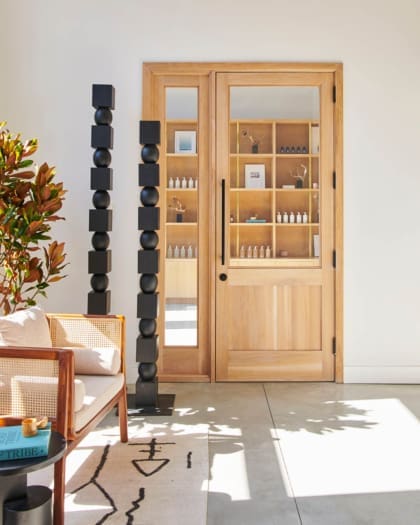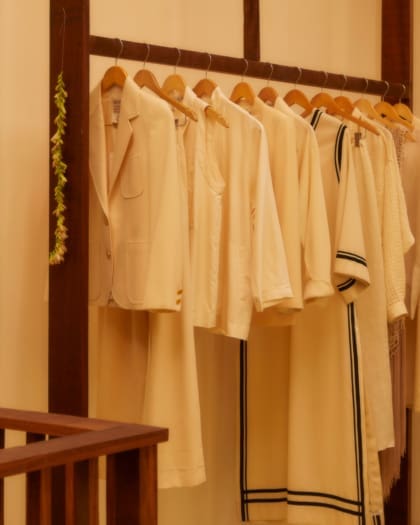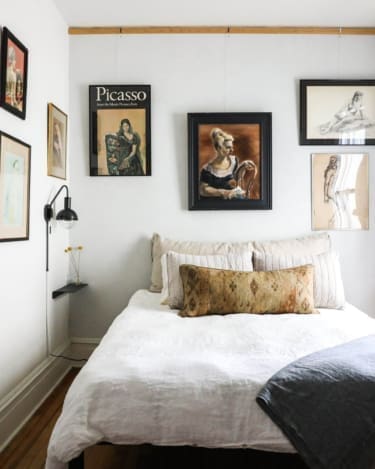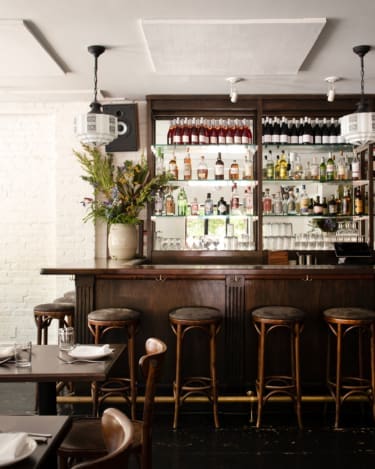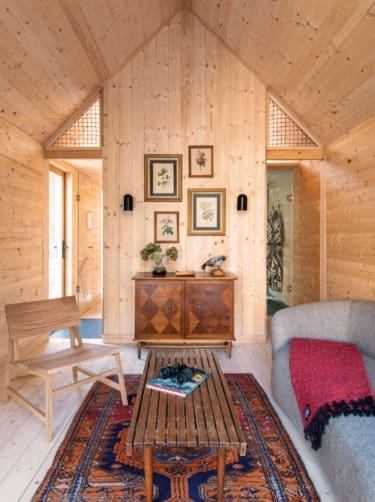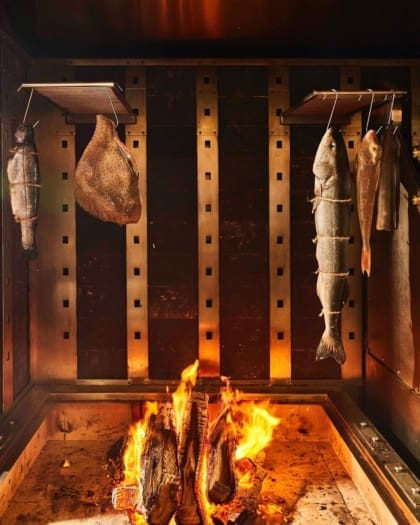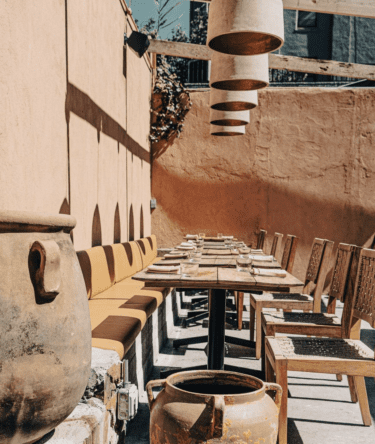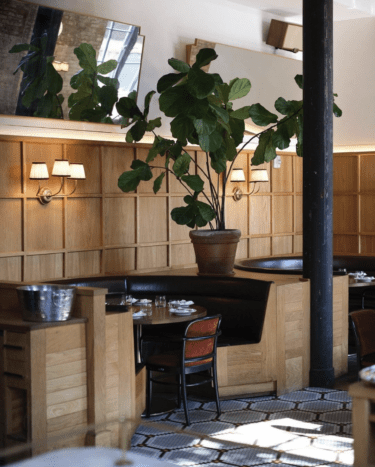
Artist Taylor Simmons: “Being a nomad inspires me more than having a home base”
NYC-based artist Taylor Simmons cites his hometown, the work of Vincent Van Gogh, and life on the road as some of his main creative influences
New York-based artist Taylor Simmons’s electric canvases are a jolt to the system. A technicolour triumph, his new body of paintings at London’s Public Gallery weaves together a vivid cast of characters in fragmented scenes, inspired by his archive of compulsively collected imagery. On the occasion of his debut solo exhibition in London, Everything All At Once, we spoke to Simmons about his painting practice, musical influences, and the journeys that have shaped him.
Taylor Simmons’s creative process
How would you describe your creative process?
My painting process has always been very intuitive. At the beginning of quarantine, I realised I was painting lovers, and people kissing or embracing. It was because that’s what I was missing at that moment – I was barely having any human contact and couldn’t go see the girl that I was dating at the time. It’s image-making, mark-making, doing things that feel good. When all is said and done, I step back and analyse why I made that painting, what I was feeling, what I was thinking.

Taylor Simmons’s career beginnings
How did you get started as an artist?
I’ve always been a creative person and had creative jobs and was into making stuff that I thought my friends would think was cool or funny. A friend of mine in New York, who is a painter, was telling me that she liked my work, that I should paint. But the confidence wasn’t there. Then the pandemic hit – I was furloughed and moved into a place with a full studio where I was able to focus and make work.
It was that same summer in 2020 when the Black Lives Matter protests started again. And I grew up in Georgia, in the South, so I had always been conscious of being a black man in America, and made work centred on that. As an artist, especially as a black artist, no matter what you make, it’s going to be politicised, so I’ve also been conscious of not getting into it too heavily.
Did you have a turning point in your practice?
In the middle of the summer of 2020, I had a terrible accident and was in the hospital for a month. During my stay, I got addicted to Instagram and spent that time collecting images or going on eBay and looking at old pictures that people were selling – I was drawn to images of the South and Atlanta, and the 1980s and 90s. When you step outside of yourself and look at these images with unbiased eyes, everything has a tinge of beauty and surrealism to it.
I then got invited to be in a group show and that kicked off me being able to paint full time. I was going to make work that centred on my accident but that ultimately felt like I would be building an altar to a traumatic event. Instead, I’ve been using these paintings to exorcise images and ideas that upset me from that time and get them out of my consciousness.

How has music influenced you?
I grew up loving rap and hip hop, but I also like to look at how people produce music. With rap – and jazz too – they take certain riffs or licks and experiment with them, arranging them in different ways. And one of the things I think of when I’m painting is that I won’t paint perfectly; I like to be messy and I like the strokes to be sketchy. I think of painting as a performance: you have a singer who gets on stage, singing as hard as they can and their voice cracks because they’re feeling it. Those are the memorable moments, those are the real performances.
Taylor Simmons’s travel experiences
How has travel shaped you?
After my one year at art school, I told myself that I would travel, and would exchange going to college for life experience. I saved up for a while and flew to Amsterdam with my best friend, where we met people and travelled around – I always had this dream of backpacking. As far as art goes, Europe was the place. We went to Prague and visited the Mucha Museum where I saw these mind-blowing Slavic paintings by Alphonse Mucha that were a departure from the Czech art nouveau posters that he’s most famous for. It opened my eyes to the idea that I was seeing art that wasn’t contemporary art – outside of a textbook. Rodin’s sculptures, for example, affected me; his work is dark and painterly.
"The beauty of travelling is that it flattens everything, but it also makes everything expand"
Where do you identify with most?
I currently live in Clinton Hill in Brooklyn. Atlanta – specifically when I was 23 years old – is the place that I felt most at home, but that’s gone now. I think I am in this state of flux and open to living anywhere right now.
What does a journey mean to you?
Travelling allows you to leave your bubble – I think in the US we don’t realise how much American propaganda we consume. Especially being from the South, it can feel like Atlanta is the world, Georgia is the world, and the furthest you may go is Tennessee.
But there’s so much more to life: as a global citizen you get to explore how layered cultures are and how vast and exciting it all is. In that moment, you take in as much as you can, do what you can, meet the people you can, and help who you can. The beauty of travelling is that it flattens everything, but also expands everything in a sense.
Which country or location most inspires you?
It’s home – in Atlanta, Georgia. That’s the place that inspires me the most right now. It’s funny, because I realised that a lot of my work deals with my adolescence. I was thinking about these figures and people that were important to me. Atlanta still has a really good energy even though it’s changed a lot. That said, I didn’t grow up in the city proper – but I was raised Catholic and our church was in Metro Atlanta. When I became an angsty teen, I used to skip out of church on Sunday mornings with my buddy and write our names with markers on things. I think about that time a lot when I’m painting: what was important to me at that age and during my adolescence, and how it is overlooked in a sense. It’s good to bring light to it and immortalise it if I can.

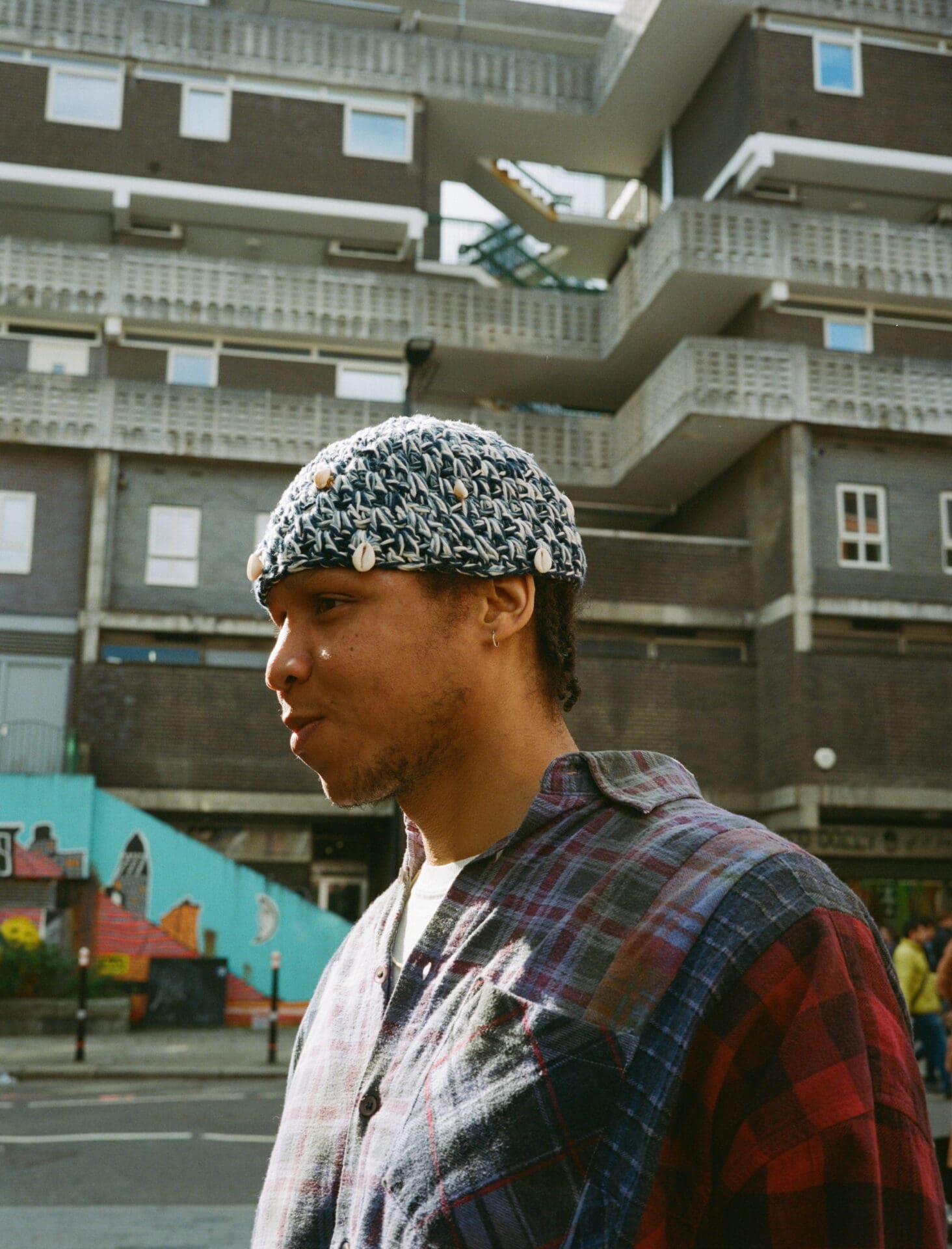
How has travel influenced the way you create?
As an artist, I get to be a sponge and absorb cultures and experiences all over the world, letting them out in different places and ways. I still remember writing in my notebook at the Van Gogh Museum about how he used reds in the shadows of some of his paintings or how he depicts flesh in a certain way – and I still do that in my paintings now. That idea that you can use bright colours in the shadows has stuck with me ever since.
What’s the journey that has impacted you most?
It was that trip to Europe, maybe because I was so young. I was 20 years old and it was my first time really seeing everything. It sparked a lot, because the following year I saved up again and went to Japan with the same friend. Even this trip to London for my exhibition has reignited my mindset of living like a nomad. It’s invigorating and inspires me more than having a home base.
Where would you most like to go back to and why?
I did a mission trip in Jamaica when I was younger, staying in the mountains. I would love to go back there because we were volunteering at an orphanage and helping special needs children. It was the first time in my life that I was away from materialistic things, and for the kids, life was less about what they had. When I get back to Brooklyn I would like to one day find a way to help or encourage kids to make art – it’s something I think everybody can do.
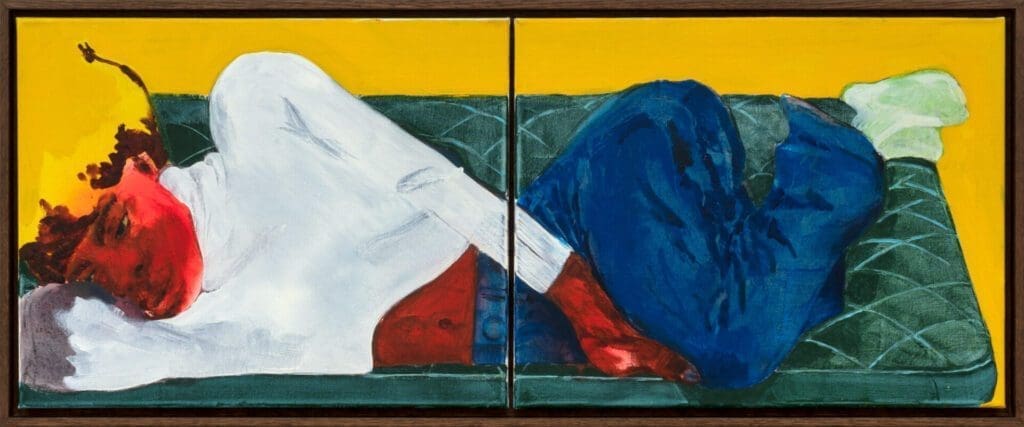
How has Covid-19 changed the way you feel about travel?
Honestly, as much as I appreciated it before, it’s more precious now than it has ever been. The pandemic stopped everyone immediately, but now that the world is opening back up, you can move more – as long as you’re responsible. With Covid-19, our worlds felt small for so long that now we can feel how big everything was.
Is there a journey you’ve always wanted to go on?
The places I’ve always travelled to have never really been brown, outside of Jamaica when I was 15 or 16 – and when you’re that age you’re not fully formed yet, your eyes aren’t as open as they could be. The first time went to Europe I told myself that the racism was not going to be the same, and it absolutely was, if not worse. So I really want to go to Brazil, which is very brown and has beautiful music, beaches, culture and the people seem warm. Travelling somewhere brown as a black man would be great because I won’t feel as ‘other’ there.
What does the future of travel look like for you?
When I get back to Brooklyn, I will be working on another upcoming show. But this trip to London has reminded me that I can live. On my first trek to Europe I remember feeling most at home when I was on the road. I’m hoping to travel and spend a month or two in different places: it’s incredibly important to me to be around people and languages that I don’t know as it’s a chance to learn. I’m hoping that the future for me is more nomadic.
@taytheism. Photography by Sophie Davidson


